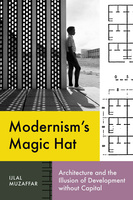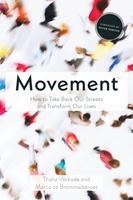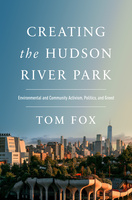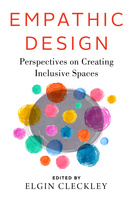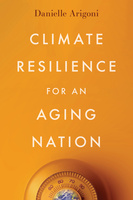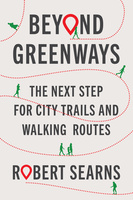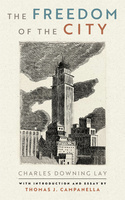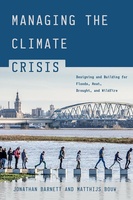Home Truths
Fixing Canada's Housing Crisis
With Canadians burdened by the world’s highest household debt after decades of failed housing policy, Home Truths: Fixing Canada’s Housing Crisis shows what went wrong, and how it can be fixed.
Nature-First Cities
Restoring Relationships with Ecosystems and with Each Other
Nature-First Cities recognizes nature as the lead architect in the most essential of restoration projects – our cities.
Modernism’s Magic Hat
Architecture and the Illusion of Development without Capital
Broken City
Land Speculation, Inequality, and Urban Crisis
Broken City argues that skyrocketing urban land prices drive our global housing market failure – so, how did we get here, and what can be done about it?
Movement
How to Take Back Our Streets and Transform Our Lives
Making our communities safer, cleaner, and greener starts with asking these fundamental questions: who do our streets belong to, how do we want to use them, and who gets to decide? To truly transform mobility, we need to look far beyond the technical aspects and put people at the center of urban design. Movement will change the way that you view our streets.
Creating the Hudson River Park
Environmental and Community Activism, Politics, and Greed
Sites of Conscience
Place, Memory, and the Project of Deinstitutionalization
Sites of Conscience charts the importance of public engagement with histories, memories, and lived experiences of institutions in forging new directions in social justice with and for disabled people and people experiencing mental distress, in a context where deinstitutionalization has failed to fully recognise, redress, and repair the ongoing impacts of institutions.
Empathic Design
Perspectives on Creating Inclusive Spaces
How do you experience a public space? Do you feel safe? Seen? Represented? The response to these questions may differ based on factors including your race, age, ethnicity, or gender identity. In Empathic Design, designer and architecture professor Elgin Cleckley brings together leaders and visionaries in architecture, urban design, planning, and design activism to explore what it means to design with empathy. Empathic designers work with and in the communities affected. They acknowledge the full history of a place and approach the lived experience and memories of those in the community with respect.
Contributors explore broader conceptual approaches and highlight design projects including the Harriet Tubman Memorial in Newark, which replaced a long-standing statue of Christopher Columbus; and restoration of the Freedom Center in Oklahoma City, first built by civil activist Clara Luper to provide a safe place for gathering and youth education; and The Camp Barker Memorial in Washington, D.C., which commemorates a “contraband camp” used to house former slaves who had been captured by the Union Army.
Empathic Design provides essential approaches and methods from multiple perspectives, meeting the needs of our time and holding space for readers to find themselves.
Climate Resilience for an Aging Nation
Arigoni explores how to integrate age-friendly resilience into community planning and disaster preparedness efforts through new planning approaches. These include an age-friendly process, and a planning framework dedicated to inclusive disaster recovery.
Climate Resilience for an Aging Nation will help professionals and concerned citizens understand how to best plan for both the aging of our population and the climate changes underway to create communities that serve the needs of older adults better, not only during disasters but for all the days in between.
Beyond Greenways
The Next Step for City Trails and Walking Routes
Searns introduces two models—grand loop trails and town walks. Grand loop trails are 20 to 350-mile systems that encircle metro areas. Town walks are shorter—2 to 6-mile routes in cities. He then lays out how to plan, design, and build support for them, drawing inspiration from trails in the US and abroad.
Planners, trail advocates, and community leaders will find the tools here to develop successful and affordable trails. Now is the time to pursue accessible pedestrian routes for this, and future, generations.
Condoland
The Planning, Design, and Development of Toronto’s CityPlace
In an era of frantic vertical urbanization known as “condoism,” Condoland explores the planning and design of Toronto’s CityPlace, one of North America’s largest residential development projects – and reveals what can happen when the real estate industry comes to dominate city planning.
Crossing Paths Crossing Perspectives
Urban Studies in British Columbia and Quebec
The Freedom of the City
Campanella writes “The Freedom of the City was prescient in 1926 and timely now. Certainly, the essentials of good urbanism extolled in the book—human scale, diversity, walkability, the serendipities of the street; above all, density—are articles of faith among architects and urbanists today.”
Lay’s words are relevant today as density and congestion are once again under siege, especially in our most productive and thriving cities.
Place and Prosperity
How Cities Help Us to Connect and Innovate
Fulton has been writing about cities over his forty-year career as a journalist, professor, mayor, planning director, and the director of an urban think tank in one of America’s great cities. Place and Prosperity is a curated collection of his writings with new and updated selections and framing material.
Fulton shows that at their best, cities not only inspire and uplift us, but they make our daily life more convenient, more fulfilling, and more prosperous.
Managing the Climate Crisis
Designing and Building for Floods, Heat, Drought, and Wildfire
Managing the Climate Crisis: Designing and Building for Floods, Heat, Drought and Wildfire by design and planning experts Jonathan Barnett and Matthijs Bouw is a practical guide to addressing this urgent national security problem. Barnett and Bouw draw from the latest scientific findings and include many recent, real-world examples to illustrate how to manage seven climate-related threats: flooding along coastlines, river flooding, flash floods from extreme rain events, drought, wildfire, long periods of high heat, and food shortages.



